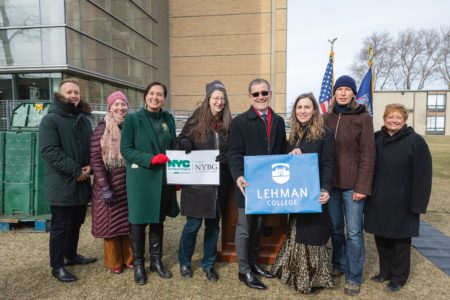Anthony Ciorra has many fond memories as a child in the 1970s spending many warm days at Orchard Beach in the Bronx, NY with his parents.
Today, Ciorra is a professional engineer and Chief of the Civil Works Branch for the U.S. Army Corps of Engineers, New York District. Ciorra has been involved in the shoreline restoration project of Orchard Beach, one of several civil works project performed by New York District.
Ciorra is proud to say he personally has played an important role in the restoration project. “Today when I drive on the roads leading into the beach, I get a sense of nostalgia,” said Ciorra. “I start thinking back to when I was a child, but I also feel a sense of pride that I helped make this beach enjoyable.”
The recreational beach is very popular and serves a heavily populated urban area of approximately 2.5 million visitors annually. Orchard Beach is located along the northeast shore of the Borough of the Bronx, at the western end of the Long Island Sound, a body of water between New York and Connecticut.
The crescent shaped beach is one-mile long and 400 feet wide and considered the “gem” of Pelham Bay Park, New York City’s largest city park.
There was a main safety issue with overcrowding that prompted the project to move forward and for the Army Corps to get the project completed expeditiously and safe for the public’s use.
This year marks the seventy-five anniversary of this historic beach and it was starting to show signs of sand erosion. The beach’s shoreline was eroding, reducing the size of the beach, which was resulting in overcrowding.
Ciorra said, “The elevation of the beach was so low that when the Long Island Sound moved in, you couldn’t keep your blanket on the beach anymore. You had to move into other crowded areas. It’s never a good thing when people are on top of each other.”
“In addition there were some steep drop-off or slope areas just off the shore that caused a few drownings,” added Ciorra.
The Army Corps was asked by the New York City Department of Parks and Recreation to restore the beach.
In October 2010, the Army Corps began working 24-hours a day to restore the beach to make it ready for the 2011 beach season. They dredged approximately 268,000 cubic yards of sand from Amboy’s Ambrose Channel using a hopper dredge and pumped the sand onto the beach. The sand was then graded and smoothed out to extend the shoreline.
Dredged sand was also used to fill in and even out the dangerous drop-off area.
In addition, the Army Corps restored one of the beach’s groins. Four thousand tons of rock was used to repair a 200-foot section of the beach’s south groin. Improving the groin is important because the groin aids in slowing down further beach erosion.
The Army Corps’ work was completed in two months, ahead of schedule and under budget.
More visitors are expected to visit the beach this year, due to its increase in popularity. The beach is easily accessible by public transportation with plenty of parking for out of state visitors.
“More people will be using their community beaches instead of going away on costly exotic vacations,” said Ciorra.
The beach includes a sandy beach area, a hexagonal-block promenade, a central pavilion with food stores and specialty shops, two playgrounds, two picnic areas, a large parking lot and 26 courts for basketball, volleyball and handball.
Once called “The Riviera of New York,” the beach is actually artificial. The beach was constructed during The Great Depression in the 1930’s under the Works Progress Administration. Under the direction of the then New York City Department of Parks Commissioner, unemployed residents were hired to construct the beach to bolster the economy.
Ciorra said, “I am certain that visitors are showing up at Orchard Beach for the first time since last summer and are seeing a significant change for the better. It feels good to be part of something where you know you made a difference and it’s a project that is important to people because it’s being used by the public.”








